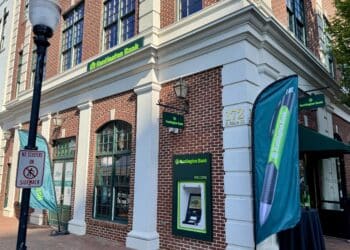Wells Fargo Shoots For Innovation Headcount of 130
 Catherine Bessant, Bank of America’s chief technology officer, recently said that innovation labs were not in the cards for her company because anything that only brings a 10% return can’t be taken seriously.
Catherine Bessant, Bank of America’s chief technology officer, recently said that innovation labs were not in the cards for her company because anything that only brings a 10% return can’t be taken seriously.
That position apparently has not been embraced at Wells Fargo & Co.
The innovation operation at the San Francisco megabank, now headed up by Steve Ellis, will count about 130 people when fully functioning. It is now about half that.
Ellis has been in charge of Wells Fargo’s newly reorganized innovation for only a week, but it was a natural transition for him. As head of the bank’s wholesale services group, he was responsible for the industry’s first corporate mobile banking app and Wells Fargo’s first startup accelerator.
One of the ideas behind the accelerator, he said, was “getting people inside the company looking outside the company, and bringing emerging technology into the company.” Some of the bank’s innovation efforts are focused on improving internal processes, some are concerned with external efforts, like working with startups.
Recently the bank decided to bring all these innovation efforts under one umbrella, which means Ellis oversees the bank’s innovation labs, based in San Francisco and Charlotte; its payments strategy group, which oversees the P2P network ClearXchange, Apple Pay, tokenization and the like; the design delivery group, which is working on user experience and changing the culture to be more agile and speed up time to market; and the startup accelerator.
If this sounds like a lot — it is. An innovation strategy group, numbering about 20 people, helps Ellis oversee the operation.
There is significant support from the C-level for innovation at Wells Fargo — an Analytics section of the innovation group is led by the bank’s newly hired chief data officer, A. Charles Thomas, for example. A cross-enterprise group that reports directly to CEO John Stumpf’s “kitchen cabinet” of close advisors helps ensure the innovation group has adequate funding and dedicated resources, and can make its voice heard throughout the larger organization, Ellis said. This points to how the innovation group’s boundaries are permeable, that it fits organically within the bank and is not just a room with ping pong tables way off in the wings somewhere.
“We have ping pong tables,” Ellis told Bank Innovation. “We’ve been doing that for 15 years. We know who we’re competing with. We know web development and mobile. We’ve built a very strong team over the years that has helped us to compete.”
That’s what happens when your bank is headquartered in San Francisco.
Ellis said plans are being formed to bring the innovation group together on its own floor, possibly in 333 Market, where the bank has “a lot of space.” Word is they’ll bring the ping pong table and free soda.
In 2015, Ellis wants to focus on biometrics, where the bank has a considerable head start — EyeVerify, which maps the unique veins in your eyes, was in its inaugural startup accelerator class. Other priorities include improving speed to market, and further developing the concept of banking as a service — pushing banking services out through APIs. “That means bank services will reside in other apps,” Ellis said, pointing to an agreement with a Los Angeles-area mall, The Grove, as an example. Customers can place orders and pay for them using a Wells Fargo API in a retailer’s app.
But APIs can represent a deeper kind of connection and links in services such as Uber or Airbnb.
“It’s a different kind of network,” Ellis said of the API links starting to spread outward from the banks these days. “The challenge is how to manage it and how to organize that whole effort, so that it’s neat and clear, and not a mess of different services.”
Ellis has lots of plans, and lots of resources and talents to make things happen, but he’s not trying to take on all the challenges the bank faces at once.
“It’s only been a week,” he said.
The headcount number was updated in this article.











